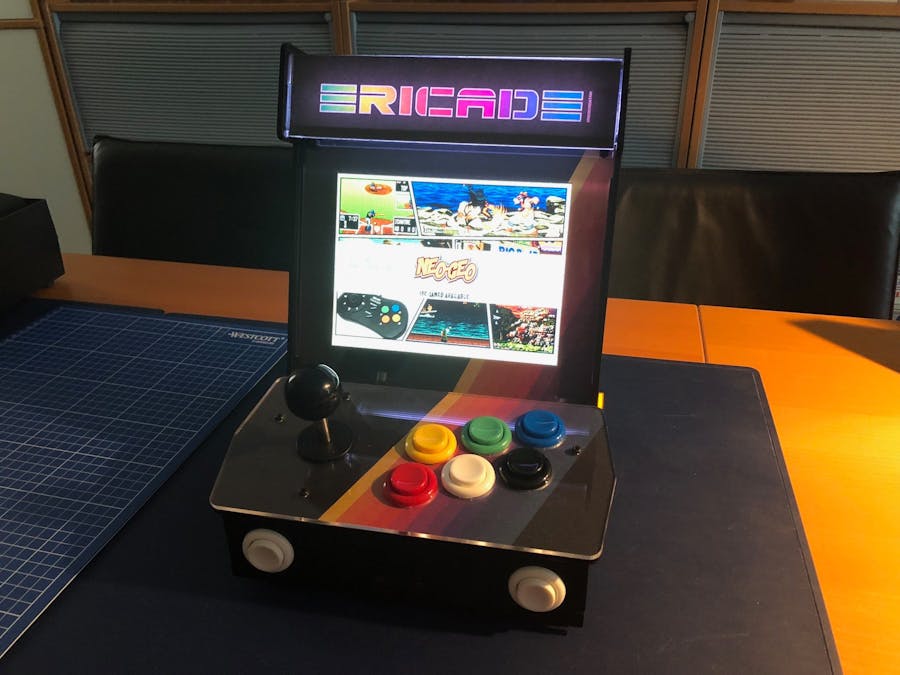This a simple tutorial to add animated lighting to your arcade cabinet or other projects. It can be used for (back-)lighting marquees and many other purposes.
You will need an Arduino Nano (or compatible board), a strip of NeoPixels, and 3 wires.
The BuildCheck the video below for the build:
Short SetupHardware: Solder three wires from the Arduino Nano to the NeoPixel strip: 5V, digital signal (I chose pin 2 on the Arduino) and ground.
Tip: Use a piece of heat shrink to tie the cables together, especially the led strip (make sure the solder connections are covered). This will prevent the solder connections from coming loose.
Code: Set the number of LEDs of the connected strip in the sketch code, upload it to the Arduino and test it. I used a 'walking', flashing and pulsing animation in the sketch, only using the color white. You can adjust the code to do all sorts of animations and use many colors. Or just use simple a backlight, whatever you prefer.
The build: I cut 2 pieces of cardboard which fit snugly in my cabinet. One piece is used as the background to glue the neopixel strip on. The other strip is placed flat behind the bottom of the marquee to prevent light from the neopixels shining down directly. Afterward I had to cut off some small edges to make it fit my cabinet.
I put a few pieces of gaffa tape on the cardboard to make them black. I glued the neopixel strip on the cardboard and taped the wires and nano to the back of the cardboard.
Put the 2 parts in the cabinet and attach a USB cable from the nano to a 5V power source. In my cabinet it is connected to a USB port of a Raspberry Pi.
Then place the stock marquee back or create your own to customize your build. I created a simple one, printed it on photo paper and cut it to fit the marquee.
Tip: The end result will be even better if you have your design printed on film by a professional printing company.
The sketch needs one library:
LicenseParts of the sketch were found on the internet, all credit goes to the creators. Feel free to use the code for your personal use, not for commercial purposes. You can contact me at ericBcreator@gmail.com.










Comments
Please log in or sign up to comment.